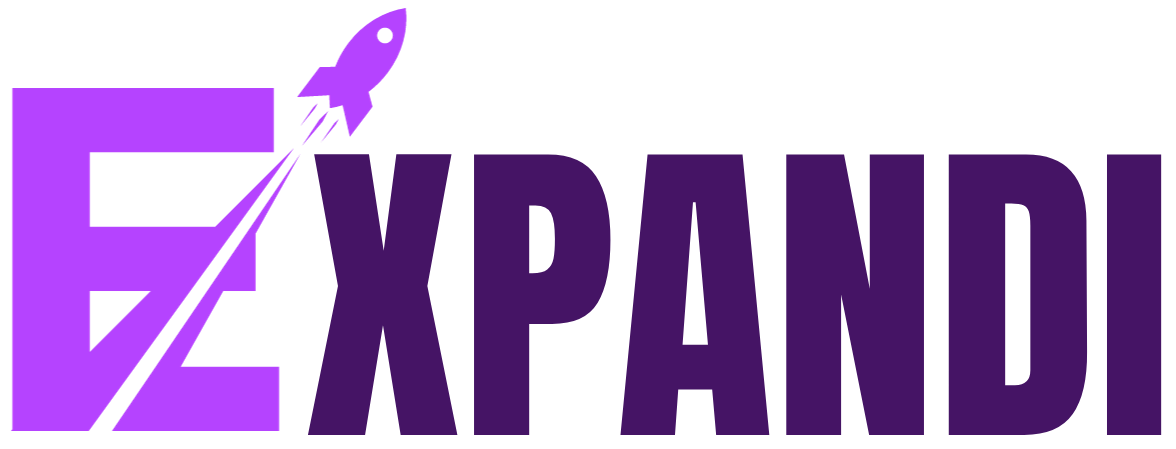Sales forecasting plays a crucial role in the success of both companies and individual career development. It enables salespeople and business leaders to make informed decisions regarding goal setting, hiring, budgeting, prospecting, and other revenue-related factors.
Given that sales serve as the lifeblood of a company, it is essential to prioritize sales forecasting. With accurate sales forecasts as a foundation for business planning, developing cash flow projections, production plans, and human resource strategies, among other important aspects, becomes easier.
Let’s delve into the concept of sales forecasting and explore its operational details.
What does sales forecast mean?
Sales forecasting is the practice of predicting future sales volumes for individuals, teams, or an entire company. It involves the creation of detailed reports based on historical sales data to estimate sales over specific timeframes, such as weekly, monthly, quarterly, or annually. Sales forecasts play a critical role in decision-making, goal-setting, and planning for business growth.
Regardless of the size or nature of a business, sales forecasting is essential for carving out a future direction that has the potential to drive business growth. By analyzing past performance and market trends, sales managers and company directors can make informed predictions about future sales. While sales forecasts may not always be completely accurate, they provide valuable insights and serve as a foundation for strategic planning.
Sales forecasting can be conducted manually, but many businesses use sales forecasting software to process large amounts of sales data and identify trends more efficiently. By utilizing multiple methods and considering various factors, businesses can enhance the accuracy of their sales forecasts. Ultimately, sales forecasting empowers organizations to make smarter decisions, set realistic goals, and align their resources effectively for long-term success.
Read More: Mastering Objections: Strategies To Navigate Common Sales Challenges
What is the importance of sales forecasts?
Sales forecasting is important because it helps businesses is important to detect and resolve any possible problems promptly. It plays a key role in decision-making for hiring, resource management, goal-setting, and budget allocation. By leveraging sales forecasts, companies can make informed decisions to optimize their operations and achieve better results. Let’s delve into how sales forecasting enables businesses to tackle challenges and proactively make strategic choices that drive success.
- It is a planning tool:
Sales forecasting serves as a planning tool for businesses. It enables them to anticipate changes, plan resource requirements, and ensure consistent supply. By aligning inventory and production with market demand, businesses can maximize sales opportunities and avoid inventory shortages. Having goods available at the right time can significantly affect sales outcomes. Sales forecasting allows businesses to adapt and plan effectively, leading to increased responsiveness, improved services, and better sales results. - It helps in Hiring decisions:
Accurate sales forecasting enables companies to make informed hiring decisions. If sales and inventory teams predict a surge in demand, hiring additional staff, such as sales representatives, can be strategically done to manage the increased workload and capitalize on growth opportunities. - It is a proactive measure:
Sales forecasting is a proactive measure that helps businesses mitigate risks and avoid potential problems. By anticipating changes and making necessary adjustments in advance, businesses can effectively address challenges and maintain smooth operations. Sales forecasts provide valuable insights and preparation time, allowing businesses to stay ahead and mitigate risks before they impact their operations. - It helps in Financial planning:
Accurate sales forecasting aids in financial planning by allowing company leaders to create budgets and growth plans that align with predicted revenue. This enables the company to expand while maintaining financial stability within budgetary constraints.Sales forecasting provides a solid foundation for effective financial planning, enabling companies to make informed decisions and achieve growth objectives.
- It is a decision-making tool:
Sales forecasting is a valuable tool for decision-making as it provides a comprehensive view of factors that can impact sales. It incorporates sales records, estimates, and events, offering insights into past performance and potential outcomes of specific actions. When businesses have access to this information, they can make well-informed decisions.
- It helps Inventory count:
Accurate sales forecasting data help inventory and product development teams determine the optimal quantity of items to order or produce, aligning with forecasted demand. This enables companies to maximize consumer demand, avoid excess inventory, and prevent stockouts. Businesses can efficiently meet customer expectations and optimize their inventory count by using sales forecasts to guide inventory management decisions. - It is a performance assessment tool:
Sales forecasting is a performance assessment tool that measures the efficiency of sales teams and the organization as a whole. It provides targets for departments to align their action plans, improve communication, and drive continuous improvements. By reducing uncertainty and increasing preparedness, sales forecasting helps businesses adapt their sales strategies to fit future circumstances and generate better results.
Read More: Overcoming Objections: Techniques For Handling Common Sales Roadblocks
Methods of Sales Forecasting
There are varying levels of effectiveness among sales forecasting methods. When it comes to predicting future sales, businesses have multiple options to select from. Each method has its own unique approach and strengths, allowing companies to select the most suitable forecasting technique based on their specific needs.
Here are some common sales forecasting methods and examples to illustrate each method.
- Forecasting Sales Based on Opportunity Stages
Opportunity Stage Forecasting is a sales forecasting method that evaluates deals based on their progression through the sales funnel. It provides a relatively easy and objective way to establish sales forecasts. It generates value estimates by estimating the likelihood of closing a deal at each stage of the sales process and multiplying it by the potential deal size. However, accurate and current data is crucial for accurate forecasts, and the method does not consider factors like opportunity size or age. - Forecasting sales based on Length of Sales Cycle
The Length of Sales Cycle Forecasting Method provides valuable insights into the sales cycle duration, helping businesses understand the timeline from lead generation to deal closure. By analyzing historical data, companies can better understand their typical sales cycle and make more accurate sales forecasts. It is important to note that while this method offers objectivity and integration capabilities, it should be complemented with other forecasting approaches to consider additional factors that may impact sales outcomes. - Forecasting Sales Based on Intuition
The intuitive forecasting method involves sales representatives using their expertise and intuition to predict whether a sale will close and adding the opportunity size to the sales forecast. This method is particularly suitable for smaller companies with experienced sales professionals. It relies on the opinions of the sales team, who have direct contact with prospects and does not require historical data. However, calculations are subjective, and each sales representative may forecast differently, making it challenging to scale or replicate the method. - Using Forcasting Based on Historical Data
The Historical Forecasting Method extensively relies on historical data to predict future sales. It compares the current lead count to past years’ counts and extrapolates a predicted sales value based on past revenue trends. This method suits companies operating in stable markets with consistent revenue patterns. It is quick and easy to implement. However, it does not consider factors such as seasonality or market changes, and it does not take into account buyer demand, which can limit its accuracy in certain situations. - Utilizing Multivariable Analysis for Sales Forecasting
The Multivariable Analysis Forecasting Method combines multiple forecasting approaches and factors for accurate sales predictions. Using sales management tools or analytics solutions, it integrates pipeline analysis, historical data, and other relevant factors. This method suits growing companies and those relying on quantitative and qualitative information. While it offers accuracy, it requires investment in analytics tools and consistent data tracking by sales reps. - Forecasting with Sales Pipeline Analysis
The Pipeline Forecasting Method analyzes sales opportunities in the company’s pipeline and assigns a value to each lead based on its potential profitability. It considers the unique characteristics of each opportunity and provides an estimate of the potential revenue in the pipeline. This method relies on data and historical sales trends, making it one of the most accurate forecasting methods. However, it requires careful data management and can be influenced by skewed data.
How to select the best method for sales forecasting?
When selecting sales forecasting methods, sales managers and directors can consider several strategies to choose an appropriate mix that aligns with the company’s product or service. These strategies include evaluating historical data, analyzing market trends, incorporating industry benchmarks, utilizing qualitative inputs from sales teams, and leveraging advanced statistical models.
Let’s see how to select the best method:
- Analyse your data.
When selecting sales forecasting methods, assess the amount and quality of your available data. If historical data is limited, opt for methods requiring fewer data, such as intuitive or sales cycle length forecasting. On the other hand, if you have comprehensive data, methods like historical forecasting or opportunity stage forecasting can provide more accurate predictions. Choose methods that align with the data you have at hand. - Examine the sales process.
Understanding your company’s sales cycle helps in choosing effective forecasting methods. Consider methods like opportunity stage forecasting for longer sales cycles, while shorter sales cycles may benefit from sales cycle length forecasting. Tailor your forecasting approach to align with the unique characteristics of your sales cycle. - Identify the importance of forecasting to the business.
Consider the trade-off between accuracy and cost when choosing sales forecasting methods. More complex methods like multivariable forecasting offer higher accuracy but may require expensive software and process changes. Simpler methods like sales cycle length and historical forecasting are cost-effective and easier to implement.
Key Takeaways
Sales forecasting is a crucial aspect of business planning that involves projecting future sales revenue based on historical data and informed judgment. It provides a roadmap for businesses to anticipate and prepare for their future direction. While sales forecasts are not definitive predictions, these guidelines guide decisions and allocating resources.
Failing to conduct sales forecasts can have detrimental effects on a business. With a clear understanding of future performance and market trends, businesses may gain valuable resources, opportunities, and the ability to make informed decisions. Sales forecasting provides a comprehensive view of the business’s overall performance, enabling proactive planning and maximizing growth potential.
Estimating the average sales cycle length and conversion rate are key considerations before creating a forecast.
Different methods are available for constructing sales forecasts, and it is important to test and evaluate their accuracy within the specific context of the business. By utilizing sales forecasting, businesses can gain insights into their performance and identify potential growth opportunities. It allows them to make informed decisions, allocate resources effectively, and seize opportunities that may otherwise be missed.
Schedule a free demo with our experts to revolutionize your outreach with expandi!
Pick up your next read⤵
Read More: Mastering Objections: Strategies To Navigate Common Sales Challenges
Read More: 7 LinkedIn Lead Generation Strategies To Get High-Quality





